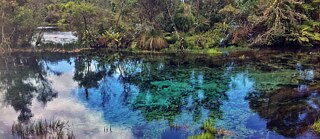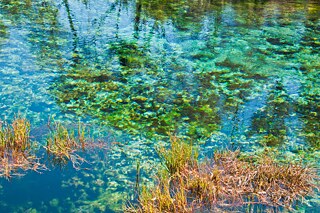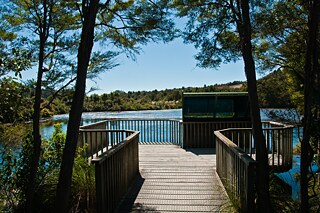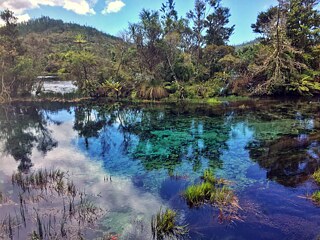Sustainable Tourism
The Te Waikoropupu Springs

The Te Waikoropupu Springs Scenic Reserve is a unique attraction at the top of New Zealand’s South Island. Despite producing 14,000 litres of water every second, the springs had a visibility level of 76% in 2018, making them the second clearest waters in New Zealand behind the Blue Lakes.
With water so clear, the temptation to experience the waters up close would be irresistible for many even if the water is a cool 11.7 degrees. And up until 2007 those who couldn’t resist could enjoy swimming in the springs.
But it became apparent that allowing people to touch the water wasn’t sustainable without destroying the natural beauty of the springs. In addition to the springs being a sacred site in Maori culture the human interaction with the water poses significant threats to the underwater life.
The biggest pollutant humans bring into the springs is nitrate. Why? As nitrate levels increase, so does the possibility of pond slime and algae blooms which can have a devastating effect on the cycle.
The nitrate enters the water via various forms of human interaction from swimming, fishing, and boating to name a few. The best chance to eliminate this from happening was to ban all contact and while the levels of nitrate have increased slightly, they haven’t gotten out of control. Didymo, a type of algae with potentially devastating effects was detected in the waters, but DOC have managed to minimise the damage.
The waters are tested regularly, but with no full time staff on site, they rely on visitors and locals to ensure everyone follows the rules. This is helped by not allowing tour buses to park at the site which limits large groups of people suddenly descending onto the boardwalk.
So while the site has long been considered sacred it was the environmental impact that was the turning point to ban all forms of human contact with the waters. In doing so, the benefits of turning away people who would visit to swim in what is likely to be the clearest water they’ve seen in was stopped for the long term benefit of the springs. With the amount of tourists in New Zealand, you can only imagine what the site of the springs would be like if people were allowed in. If the nitrates took hold and algae and pond slime spread, the beauty of the waters may no longer be the same and in the end, no one would visit to swim in the gross pond full of slime.
There’s a boardwalk that takes you on a clockwise loop from the carpark with the highlight of course being a chance to view the springs and the dancing sands produced when the water surges up from underground.
The Department of Conservation won’t let the springs just be as they are, they aim to enhance the visitor experience however possible. There was a time when there was a periscopic box platform on the springs intended to give viewers a better view of the underwater activity. This was never a big success however and the intrusive platform was removed in 2012.


